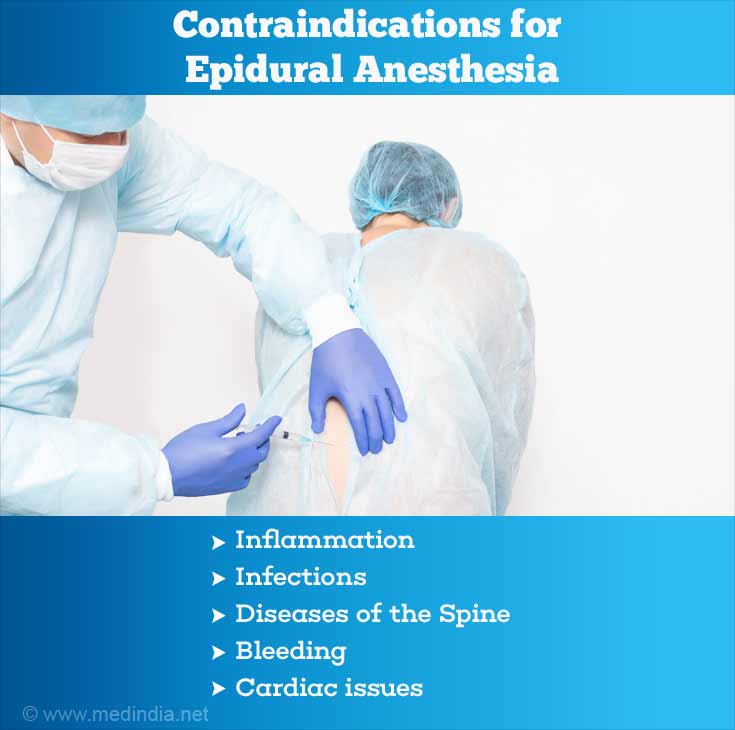What is Epidural Anesthesia?
Epidural anesthesia is used as an anesthetic for procedures involving the lower limbs, pelvis, perineum and lower abdomen. It is also possible to perform upper abdominal and thoracic procedures under epidural anesthesia alone.
Epidural anesthesia is given in the epidural space outside the subarachnoid space and not into the fluid space like spinal anesthesia. In this form of anesthesia, only nerve roots exiting from the cord are blocked and hence the technique is different from spinal anesthesia.
This form of administration had many applications and was first used in humans in the year 1921. It is very versatile as it can be used as an anesthetic in combination with general anesthesia, to reduce the post-operative pain following surgery.
How do you Perform Epidural Anesthesia?
The procedure should be taken up only after a consent form is obtained from the patient and when the proper equipment is available. Prior to performing the block, all equipment should be checked. Epidural anesthesia should not be attempted when there is a lack of availability of proper equipment for resuscitation and also general anesthesia, in case the spinal fails.
An intravenous line is mandatory before epidural administration to manage any emergency situation that may arise. The administration should be done under strict aseptic conditions. Different types of techniques, procedures and drugs are available. The choice of the ideal approach is dependent on the surgical need and the discretion of the anesthetist.
The position of the patient is similar to spinal anesthesia. The patient is usually positioned in a sitting posture on the operating table. A small stool for placing the foot can be given for the patient's convenience and support. The forearms can be made to rest on the thighs to make the patient stable and comfortable.
Alternatively, the procedure can be performed with the patient lying on their side with their hips and knees maximally flexed in the form of the letter C.
Following positioning, the anesthetist will clean the back using an antiseptic solution. They may administer a little bit of local anesthetic to numb the skin at the point where the needle will be inserted so that you do not feel the pain due to the needle.
A hollow needle is inserted space into the epidural space. Once space is found a thin flexible epidural catheter will be inserted through the needle and left in the space.in the spinal cord and the needle is removed. The catheter with an injection port is then taped unto the back, so that the anesthetic solution can be injected into the epidural space as and when required through the injection port.
After successful administration, you will be positioned in the required position and once again all your parameters will be checked by the anesthetist.
What are the Indications for Epidural Anesthesia?
- Hip and Knee surgery
- Surgery in the lower limb, or amputation
- Obstetrics: Difficult or high-risk labor, twin pregnancy, pre-eclampsia, and prolonged labor. Cesarean section performed under epidural anesthesia is associated with a lower maternal and fetal morbidity because general anesthesia and placental transfer of these drugs to babies can be avoided.

- Low concentration local anesthetics, opioids, or combinations of both can be given for control of postoperative pain in patients undergoing abdominal and thoracic procedures
- Trauma related to the respiratory system with associated rib or sternum fractures
- In a high risk patient of aortic dissections and severe pulmonary artery hypertension epidural anaesthesia can be chosen for patients. Occasionally complex surgeries such as
kidney transplantation and coronary artery bypass have been done under epidural anesthesia - In this form of anesthesia, the catheter can be left in situ for the administration of post-op analgesia for 3 to 5 days postoperatively.
What are the Advantages of Epidural Anesthesia?
Continuous or prolonged pain relief can be provided, unlike spinal anesthesia where it lasts for only 2-3 hours.
What are the Complications and Side Effects of Epidural Anesthesia?
The complications are rare. Epidural anesthesia is much safer than spinal anesthesia. These rare complications include -
- Hypotension
- Nausea, sensory loss, difficulty in breathing
- Toxicity manifested by light-headedness, tinnitus, numbness, feeling of anxiety, confusion, tremor, convulsions, coma and cardio-respiratory arrest
- Total spinal anesthesia is a rare complication manifested by profound hypotension, apnea, unconsciousness and dilated pupils
What are the Contraindications to Epidural Anesthesia?
- Patient refusal for surgery, uncooperative patients
- Abnormal bleeding or clotting parameters, anti-coagulant therapy
- Skin infection at/near injection site
- Presence of neurological disorders
- Anatomical abnormalities of the vertebral column






